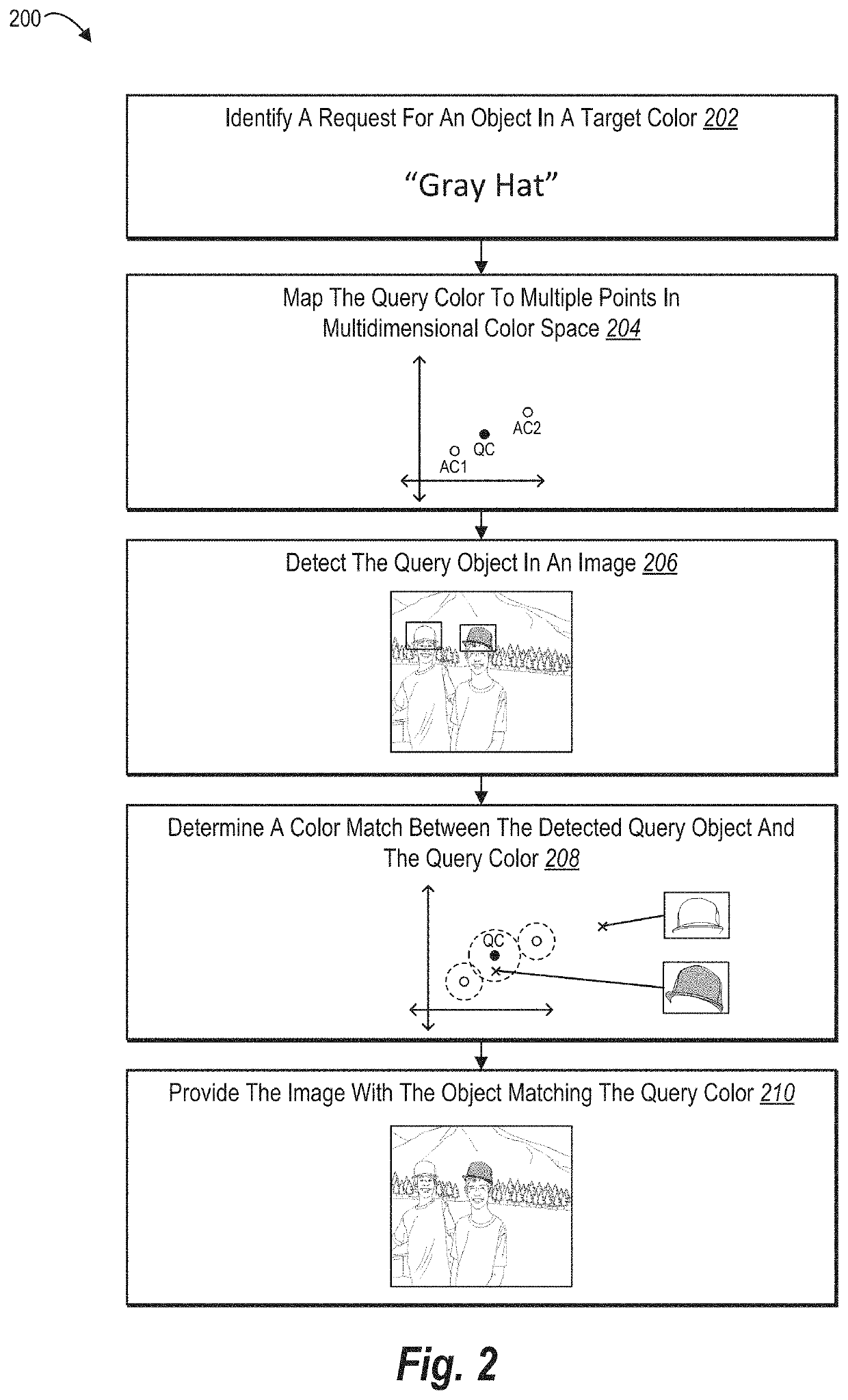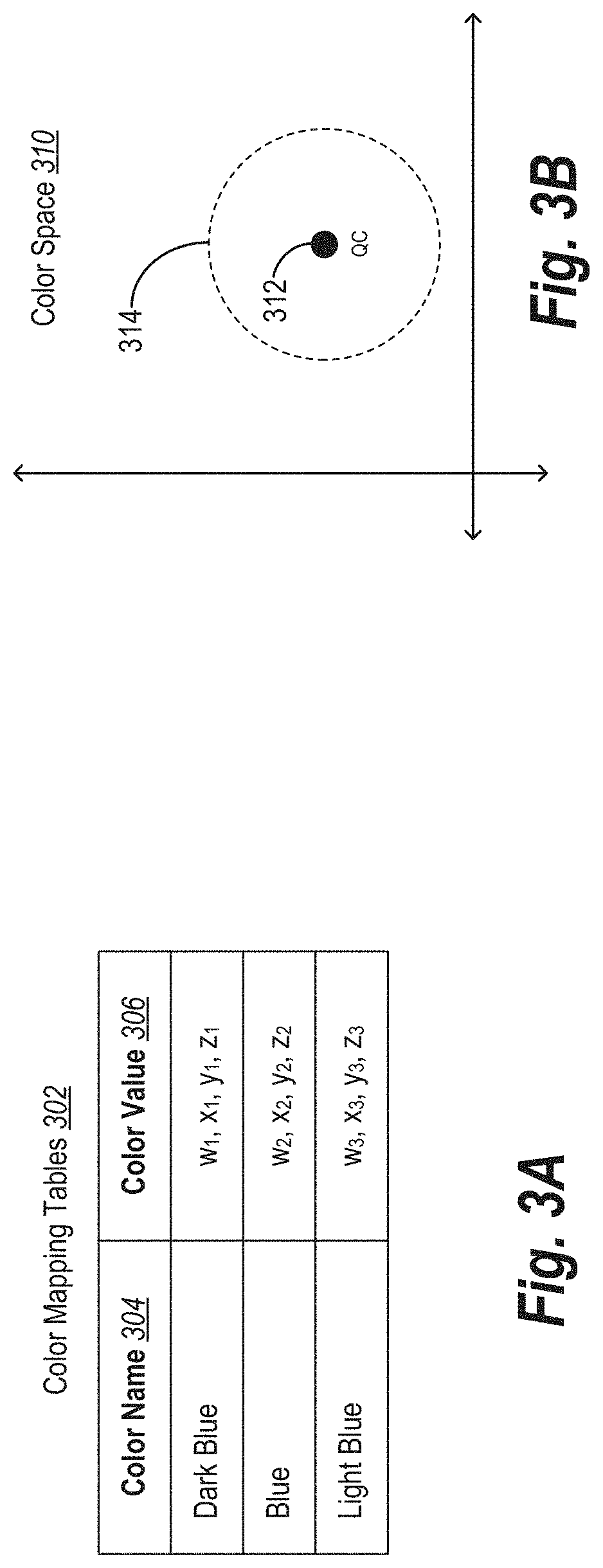Classifying colors of objects in digital images
a technology of object color and image, applied in image enhancement, instruments, biological models, etc., can solve the problems of inability to capture the complexity and nuances of color matching associated with human perception, the conventional image selection system suffers from a number of problems in relation to accuracy, efficiency and flexibility of operation, and many conventional systems fail to accurately classify objects in images associated with a given color. achieve the effect of accurately and efficiently classifying the color of objects in images
- Summary
- Abstract
- Description
- Claims
- Application Information
AI Technical Summary
Benefits of technology
Problems solved by technology
Method used
Image
Examples
Embodiment Construction
[0025]This disclosure describes one or more embodiments of a color classification system that accurately classifies object colors in digital images. In particular, in one or more embodiments, the color classification system utilizes a multidimensional color space and one or more color mappings to classify the color of objects. Using the color classifier, the color classification system can accurately and efficiently detect a particular instance of an object in an image based on a target color as well as identify one or more digital images that include the objects matching the target color.
[0026]To illustrate, in one or more embodiments, the color classification system can identify a color similarity region for a color within a multidimensional color space or separate color similarity regions for multiple colors. In addition, the color classification system can identify an object in a digital image that is made of up of pixels. The color classification system can map the pixels to th...
PUM
 Login to View More
Login to View More Abstract
Description
Claims
Application Information
 Login to View More
Login to View More - R&D
- Intellectual Property
- Life Sciences
- Materials
- Tech Scout
- Unparalleled Data Quality
- Higher Quality Content
- 60% Fewer Hallucinations
Browse by: Latest US Patents, China's latest patents, Technical Efficacy Thesaurus, Application Domain, Technology Topic, Popular Technical Reports.
© 2025 PatSnap. All rights reserved.Legal|Privacy policy|Modern Slavery Act Transparency Statement|Sitemap|About US| Contact US: help@patsnap.com



